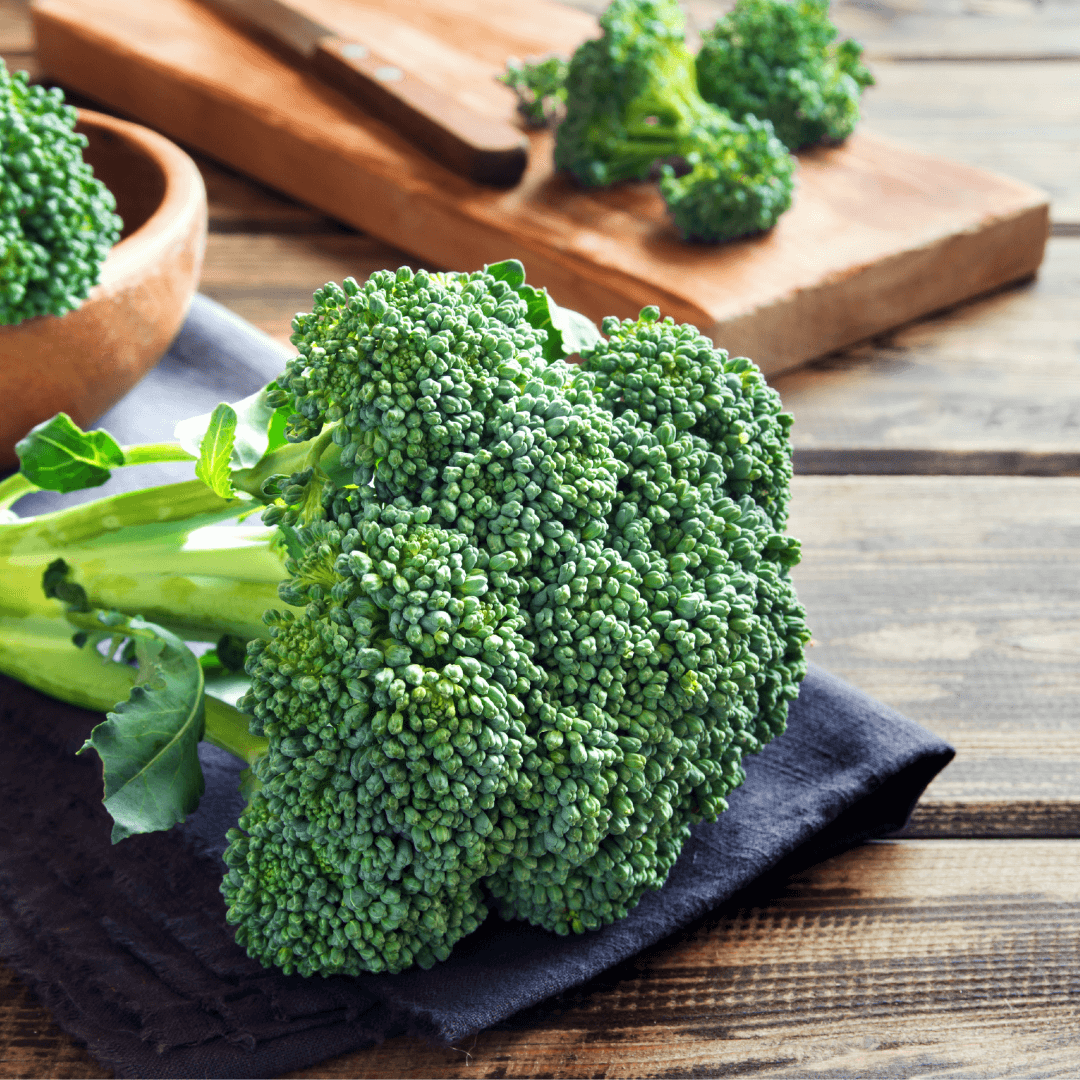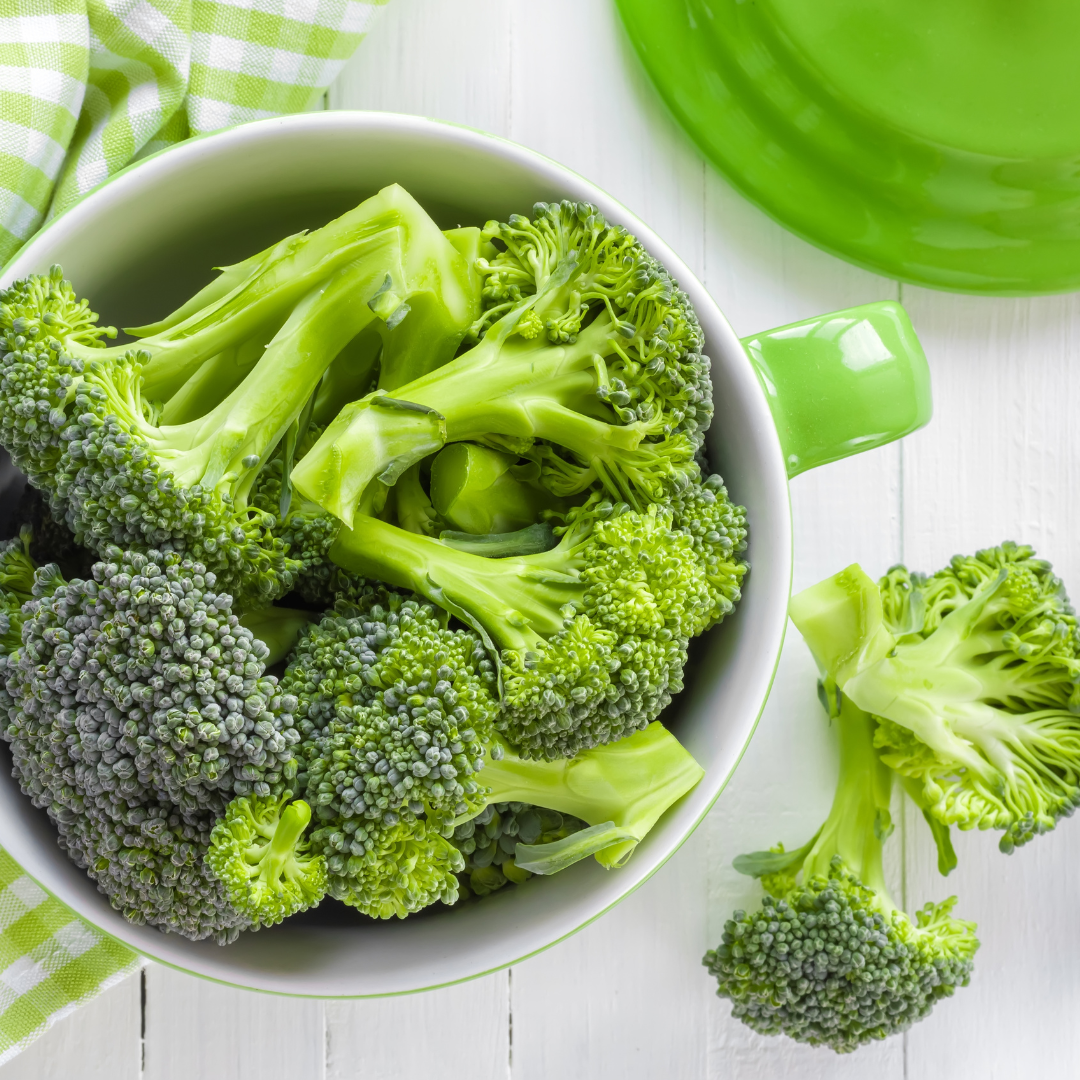Broccoli is a cool-weather crop that can be grown successfully in containers. It's a nutritious vegetable packed with vitamins and minerals and is known to boost the immune system. Growing broccoli in pots is ideal for people with limited space or who want to grow vegetables in a controlled environment. In this article, we'll go through a step-by-step guide on how to grow broccoli in containers.
Benefits of Growing Broccoli in Containers
- Perfect for those with limited space
- Greater control over the growing environment
- Protects the plant from pests and diseases in the soil
- Can extend the growing season
Choosing the Right Container
The first thing you need to do when growing broccoli in pots is to choose the correct container. A container at least 12 inches deep and 12 inches wide is ideal for growing a single broccoli plant. If you plan to raise more than one broccoli plant, choose a container at least 24 inches wide.
Selecting the Right Soil
Broccoli plants prefer well-draining, rich soil. Use potting soil that contains peat moss, perlite, and vermiculite. If you make your own potting mix, combine equal parts of peat moss, perlite, and vermiculite. Avoid using garden soil as it can harbor pests and diseases.
Waltham 29 Broccoli Seeds
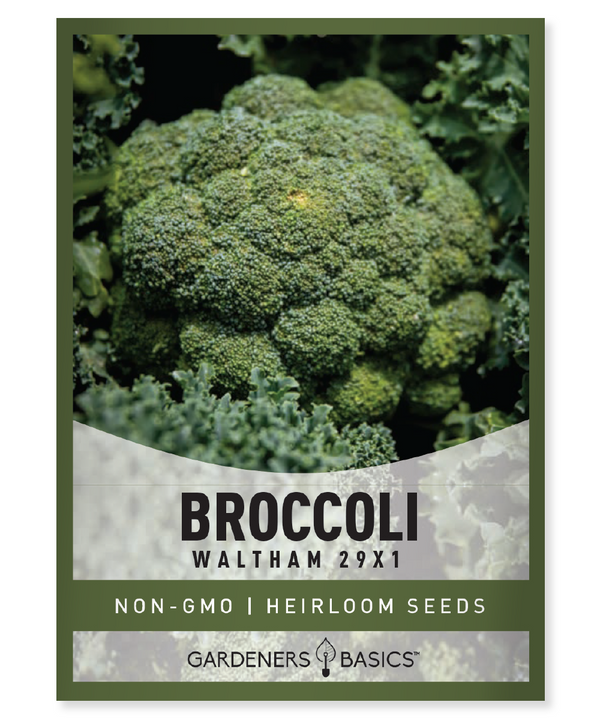
$2.49
Waltham Broccoli Seeds – Heirloom, Non-GMO, Non-Hybrid, Open-Pollinated Grow the perfect garden with our premium Waltham 29x1 Broccoli seeds, a versatile, cold-tolerant heirloom variety that produces large, flavorful heads with tender side shoots for extended harvests. These seeds are non-GMO,… read more
Planting Broccoli Seeds
Broccoli seeds can be sown directly in the pot or started indoors and then transplanted. If you want to start your seeds indoors, plant them 6-8 weeks before your region's last frost date. You can also purchase broccoli seedlings from a garden center or nursery.
- Fill the container with potting soil, leaving 1-2 inches of space at the top.
- Plant the seeds or seedlings about ½ inch deep and 3 inches apart.
- Water the soil thoroughly.
Positioning the Container
Broccoli plants require full sun to grow, so place the container in a spot that receives at least six hours of sunlight daily. If you live in a hot climate, provide some afternoon shade to prevent the plant from overheating.
Watering Broccoli Plants
Keep the soil moist but not waterlogged. Water the plant deeply once a week or more frequently if the ground feels dry. Avoid overhead watering as it can promote the growth of fungal diseases.
Fertilizing Broccoli Plants
Broccoli plants are heavy feeders and require regular fertilization to produce large, healthy heads. Use a balanced fertilizer with equal parts nitrogen, phosphorus, and potassium. Apply the fertilizer once a month.
Caring for Broccoli Plants
Broccoli plants are susceptible to pests such as cabbage loopers and aphids. Check the plant regularly for signs of infestation and treat it with insecticidal soap or neem oil if necessary. Broccoli plants also require frequent weeding to prevent competition for nutrients.
- Support the plant as it grows to prevent the stem from breaking.
- Pinch off any yellowing or damaged leaves to promote healthy growth.
- Remove any side shoots starting to flower to encourage the plant to produce more side shoots.
Harvesting Broccoli
Broccoli heads are ready to harvest when firm, tight, and about 4-7 inches in diameter. Cut the central authority with a sharp knife, leaving several inches of stem attached to the plant. After harvesting the main head, the plant will continue to produce side shoots that can be harvested for several weeks.
- Harvest the side shoots when they are 2-4 inches in diameter.
- Store the harvested broccoli in a plastic bag in the refrigerator for up to one week.
Using Heirloom Seeds
To grow broccoli, consider purchasing heirloom seeds from a reputable supplier. Heirloom seeds are open-pollinated, meaning the plant will produce seeds that can be saved and replanted the following year.
Tips for Growing Broccoli in Containers
- Make sure the container has drainage holes to prevent waterlogging.
- Choose a container with a light color to reflect the sun's heat and prevent the roots from overheating.
- Place the container on a wheeled platform to move it around to follow the sun.
- Mulch the soil to retain moisture and prevent weeds from growing.
- Use a trellis or stake to support the plant as it grows.
Calabrese Broccoli Seeds
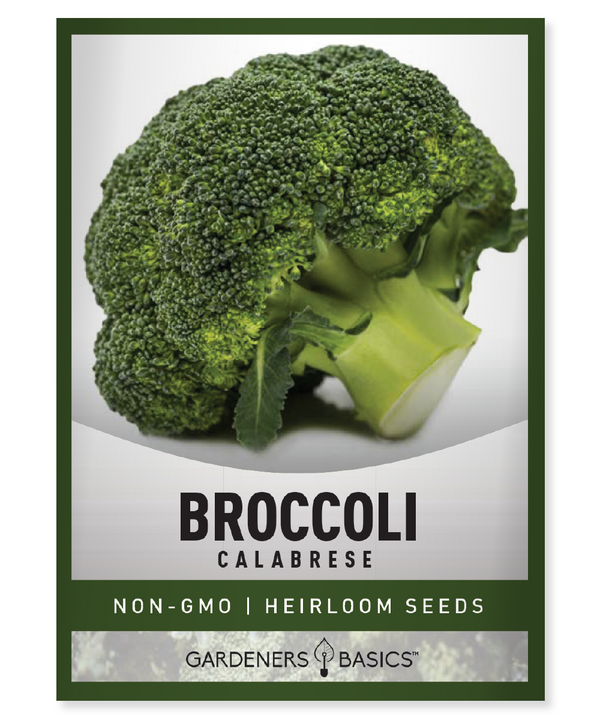
$2.49
Calabrese Broccoli Seeds – Heirloom, Non-GMO, Non-Hybrid, Open-Pollinated Grow your own delicious and nutrient-packed Calabrese Broccoli with our premium heirloom seeds! Known for its tender florets and exceptional flavor, Calabrese Broccoli is a classic Italian variety perfect for home… read more
Conclusion
Growing broccoli in containers is a great way to enjoy fresh, nutritious vegetables even with limited space. Following the steps outlined in this article, you can grow fast-maturing broccoli plants that are ready to harvest in just 50-60 days. You can enjoy a bountiful harvest of delicious broccoli heads throughout the growing season with proper care and attention.
Remember to choose the suitable container, soil, and position for your broccoli plant. Ensure to water and fertilize it regularly and watch for pests and diseases. Harvest the broccoli heads when ready and store them in the fridge for later use. With these tips, you can successfully grow broccoli in containers and enjoy the benefits of this nutritious vegetable. Now that you know how to grow broccoli in containers, will you grow some this year if you're short on garden space?
Be sure to check out our complete guide on how to grow broccoli from seed too.
Frequently Asked Questions (FAQs)
Q: How much sun does a broccoli plant need?
A: Broccoli plants require full sun to grow, so place your container in a spot that receives at least six hours of sunlight daily.
Q: How often should I water my broccoli plant?
A: Keep the soil moist but not waterlogged. Water the plant deeply once a week or more frequently if the ground feels dry.
Q: How can I prevent pests from attacking my broccoli plant?
A: Broccoli plants are susceptible to pests such as cabbage loopers and aphids. Check the plant regularly for signs of infestation and treat it with insecticidal soap or neem oil if necessary.
Q: Can I grow broccoli in a small container?
A: Yes, you can grow broccoli in a small container if it is at least 12 inches deep and 12 inches in diameter. However, keep in mind that smaller containers may limit plant growth.
Q: How do I know when my broccoli is ready to harvest?
A: Broccoli heads are ready to harvest when firm, tight, and about 4-7 inches in diameter. Cut the central authority with a sharp knife, leaving several inches of stem attached to the plant.
Q: Can I plant other vegetables with my broccoli in the same container?
A: Planting other vegetables with broccoli in the same container is not recommended, as they require a lot of space and nutrients to grow. Instead, consider planting companion plants that can benefit the broccoli plant, such as herbs like basil or marigolds.
Q: Can I use garden soil for growing broccoli in containers?
A: It's best to avoid using garden soil for growing broccoli in containers, as it can harbor pests and diseases. Instead, use potting soil that contains peat moss, perlite, and vermiculite, or make your own potting mix using these ingredients.
Q: Can I grow broccoli in a container all year round?
A: Broccoli is an excellent weather crop and grows best in temperatures between 60-65°F. It's possible to grow broccoli in a container all year round if you live in a climate with mild temperatures, but in most regions, it's best to plant broccoli in the spring or fall.
Q: How do I fertilize my broccoli plant?
A: Broccoli plants are heavy feeders and require regular fertilization to produce large, healthy heads. Use a balanced fertilizer with equal parts nitrogen, phosphorus, and potassium. Apply the fertilizer once a month.
Q: How long does broccoli grow in a container take?
A: Broccoli typically takes 50-60 days to mature, but this can vary depending on the variety, growing conditions, and climate.
Q: Can I reuse the soil in my container after harvesting my broccoli plant?
A: You can reuse the soil in your container after harvesting your broccoli plant. However, it's essential to remove any plant debris and add fresh compost or fertilizer to replenish the nutrients in the soil.
Vegetable Seed Vault Kit | 35 Variety Pack
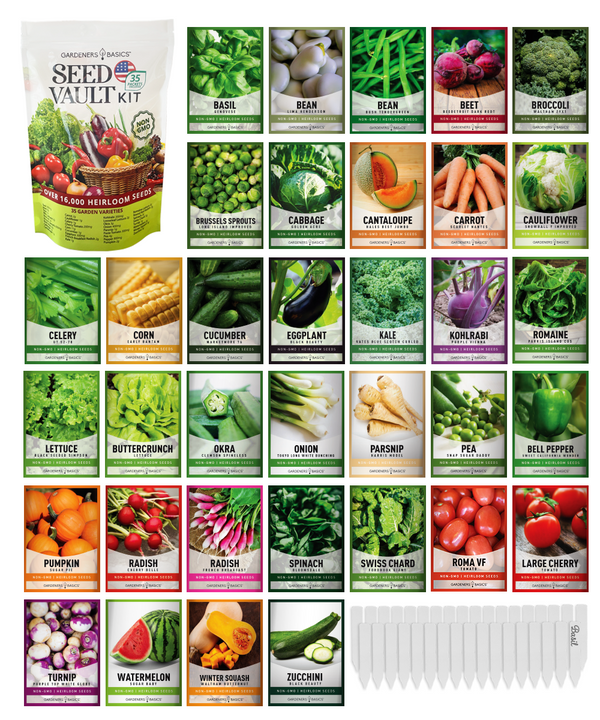
$29.95
$49.95
Ultimate Survival Seed Vault: 16,000+ Non-GMO Heirloom Vegetable Seeds for Emergency Preparedness Introducing the Seed Vault Kit, your all-in-one solution for emergency preparedness and sustainable gardening. This premium seed kit contains over 16,000 non-GMO, Heirloom, Non-Hybrid, and Open Pollinated seeds,… read more
Q: How do I prevent my broccoli plant from getting leggy?
A: Leggy broccoli plants are usually caused by a lack of sunlight or overcrowding. Make sure to place your container in a spot that receives at least six hours of daylight daily and provides adequate spacing between plants.
Q: Can I grow broccoli indoors?
A: You can grow broccoli indoors if you have a sunny windowsill or artificial grow lights. However, remember that broccoli plants require a lot of space and may not thrive in a small indoor environment.
Q: How do I store harvested broccoli?
A: Store harvested broccoli in a plastic bag in the refrigerator for up to one week. Avoid washing the broccoli before storing it, as excess moisture can promote spoilage.
Q: Where can I buy broccoli seeds or seedlings?
A: You can purchase broccoli seeds or seedlings from a garden center, nursery, or online supplier.
Following these frequently asked questions and the steps outlined in this article, you can successfully grow broccoli in containers and enjoy a bountiful harvest of nutritious and delicious broccoli heads.



